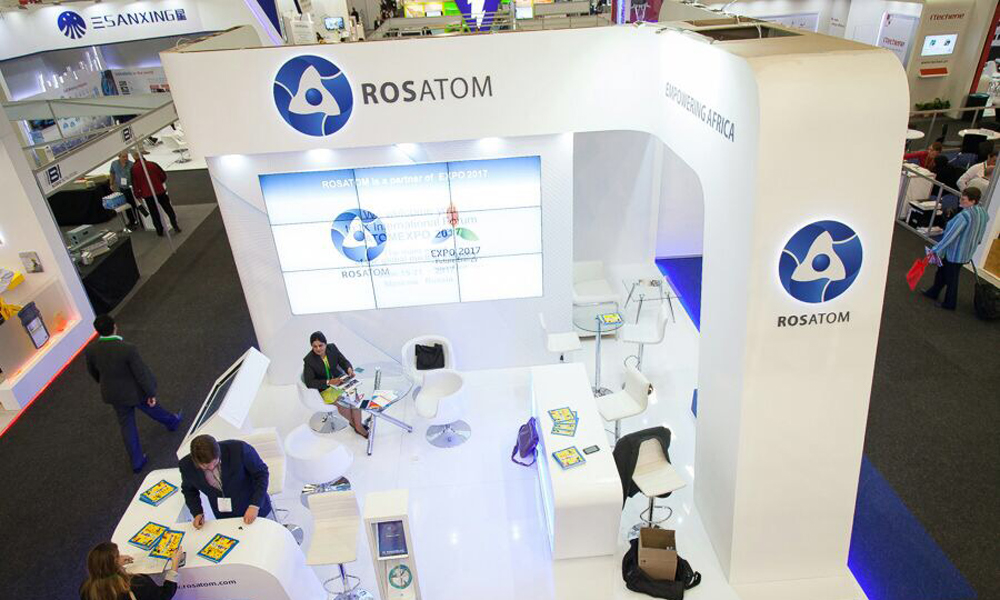
Rosatom Walks the World
back to contentsThe first of the events was the Annual Asia Nuclear Business Platform held on 17–18 May in Shanghai. A key event in the Asian region, every year it brings together major nuclear vendors, including Rosatom, to share their experiences. The centerpiece of the conference was a panel discussion entitled Key Global Drivers of Nuclear Energy Development. Among the speakers was Sergei Dyomin, Vice President for Eastern Asia, Rusatom International Network (RIN). “Rosatom pays much attention to operational safety of its nuclear facilities. We operate VVER-1200, the world’s only Generation 3+ reactor, at the Novovoronezh Nuclear Power Plant in Russia. This is the safest operating reactor in the world,” he noted.
The Russian-Chinese partnership comprises many civil nuclear projects, including the Tianwan Nuclear Power Plant where Rosatom built the first two 1,000 MW reactors. They were commissioned in 2006 and 2007 respectively and have been operating without failure till now. Tianwan NPP is another example of economic cooperation between China and Russia. A new step was made in 2010 when Rosatom signed a framework agreement for the construction of Tianwan Units 3 and 4 based on VVER-1000 reactors with a capacity of 1,060 MW each. The construction is progressing in accordance with the schedule to commission the new units in 2018. The Russian-Chinese cooperation has long been gathering pace. A good example is Rosatom’s regional center opened in Beijing (China) during the Nuclear Industry China, an international exhibition held in April 2016. “Rosatom’s office in Beijing will consolidate our efforts in the region and bring more Russian nuclear companies to Eastern Asia,” RIN President Alexander Merten said at that event.
An important issue mentioned by Sergei Dyomin was public acceptance of nuclear technology. He reminded of many myth-based prejudices, still existent and hampering the nuclear industry development in the world. He stressed the importance of raising public acceptance by running educational programs and increasing public awareness.
Nuclear education, he believes, is one of the most effective ways of gaining public trust in nuclear energy. This refers, first and foremost, to public awareness programs rather than to institutions of higher education. In Russia, where nuclear facilities account for more than 17% of the total electricity generation, these programs are in the focus of attention. Rosatom operates nuclear information centers in 22 Russian cities to present peaceful uses of nuclear energy in layman’s terms. The network was established only five years ago, but already has an impressive track record of more than 45,000 public awareness projects.
Know-how in Berlin
Concurrent with the Shanghai event, Berlin hosted the Annual Meeting on Nuclear Technology (AMNT). The event was staged by the German Atomic Forum (DAtF) and the German Nuclear Society (KTG) to concentrate on nuclear know-how and innovations, safety improvements, and performance enhancement. Russia was represented by ASE’s subsidiary NUKEM Technologies GmbH demonstrating its unique solutions. The company specializes in back-end services, including radioactive waste and spent nuclear fuel management and nuclear decommissioning. NUKEM’s representatives spoke about their broad expertise in the treatment of liquid radioactive waste at nuclear facilities. Specifically, the company’s principal engineer Marina Sokcic-Kostic told the audience about unconventional measurement methods for high background radiation levels. “The components must be carefully selected to ensure resistance to radiation exposure. Unconventional methods make it possible to do measurements even close to damaged Fukushima reactors, at the storage facilities next to the molten core and other similar places,” she said.
Stable energy supplies for Africa
Another major event where Rosatom presented its capabilities was the 17th African Utility Week in Cape Town. Africa needs sustainable energy sources that do no harm to the environment. Nuclear power fully meets all the requirements. Today, African countries regard nuclear not only as a chance to cover their energy needs, but also as a boost to the regional economy. “Investments in nuclear power plants are always long-term and make it possible to ensure sustainable power generation for many years. Koeberg, Africa’s only nuclear power plant, is the most cost efficient energy source for South Africa,” noted Viktor Polikarpov, Vice President for Central and South Africa, Rusatom International Network. According to him, nuclear technology is a driver of social and economic development. “Nuclear creates of new jobs and new educational programs for young professionals. Nuclear medicine saves millions of lives every year; nearly 40% of foodstuffs across the globe have a longer shelf life thanks to irradiation,” Mr. Polikarpov noted.
As Phumzile Tshelane, CEO of the South African Nuclear Energy Corporation (NECSA), said earlier, South Africa had plans to increase its share of nuclear power generation from the current 5% to 30–40% of the national energy mix, and restrictive court judgments would not prevent them from building nuclear power plants with a total capacity of 9.6 GW. “We need nuclear to generate 30–40% of electric power in the country to maintain sustainable economic growth and reduce carbon dioxide emissions from coal-fired power plants,” said Mr. Tshelane in an interview to EE Publishers.




